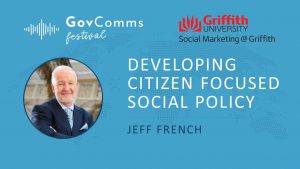Session Overview
In this session from the 2020 GovComms Festival, Research Assistant at Griffith University Murooj Yousef discusses the role of emotions in marketing campaigns that aim to change our behaviour.
Murooj delineates between the two routes of persuasion: the rational appeal and the emotional appeal. Whereas the rational appeal relies on facts, reasoning and statistics, the emotional appeal relies on emotions, intuition and feelings.
Murooj explains why emotional appeals can be more effective than rational appeals in changing the behaviour of consumers and citizens. She discusses the many benefits of emotional appeals, and why they can be so effective.
She also explores the difference between positive and negative emotional appeals, using examples to illustrate the differences. She also explains the third option: co-active appeals that use a mixture of positive and negative emotions.
Murooj then explains the situations in which you should use positive, negative or co-active appeals. For example, positive appeals can be more effective when a low amount of effort is required and negative appeals can be more effective for complex issues.
After watching this video, you will be able to:
- Identify campaigns that use rational appeals, and those that use emotional appeals.
- Understand the situations where you should use negative emotions and positive emotions.
- Understand why emotional appeals to persuasion can be more effective in certain circumstances than rational appeals.
Please note that this is a recording of a live presentation.


